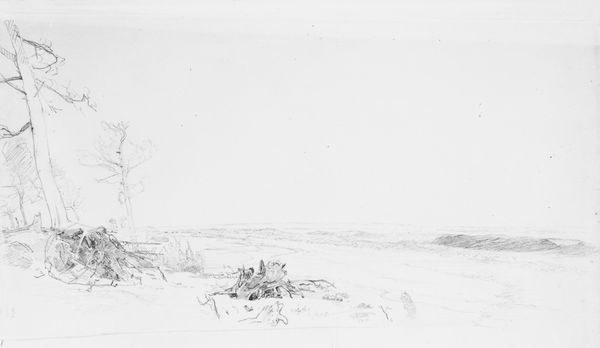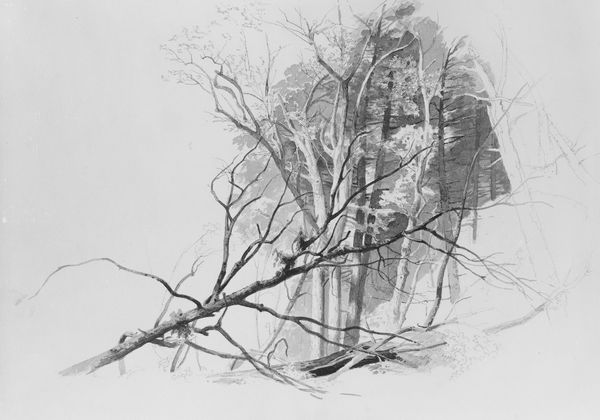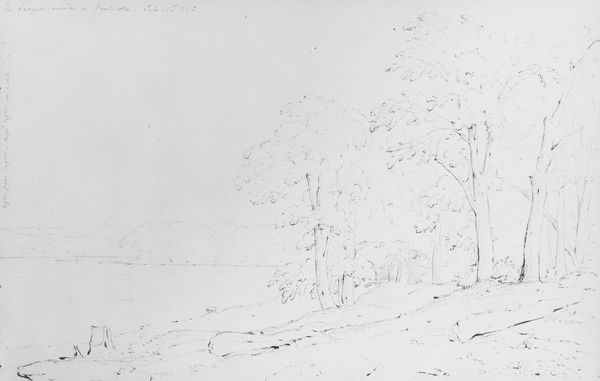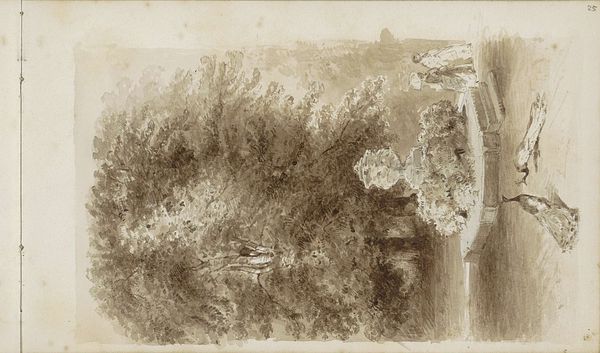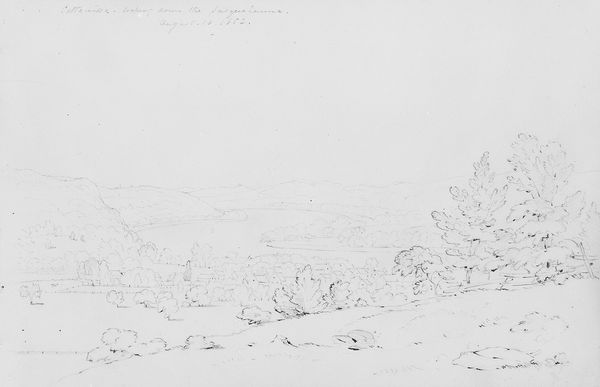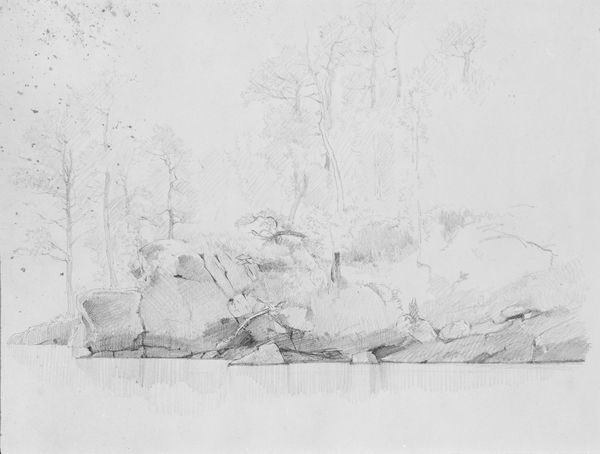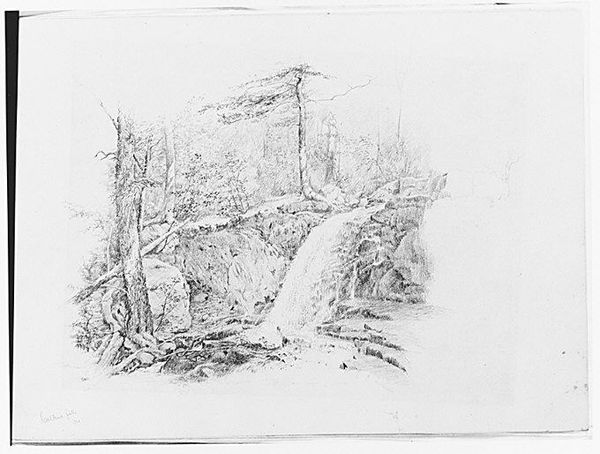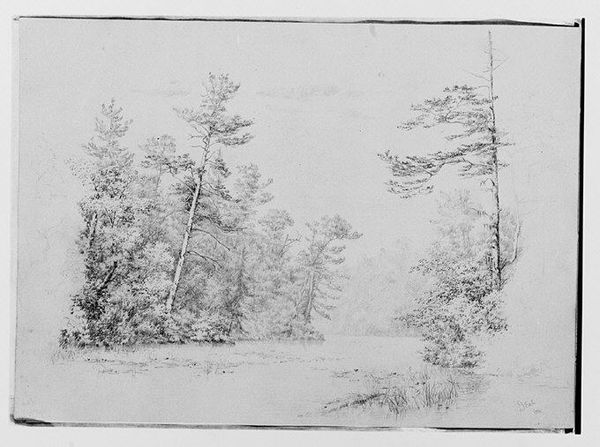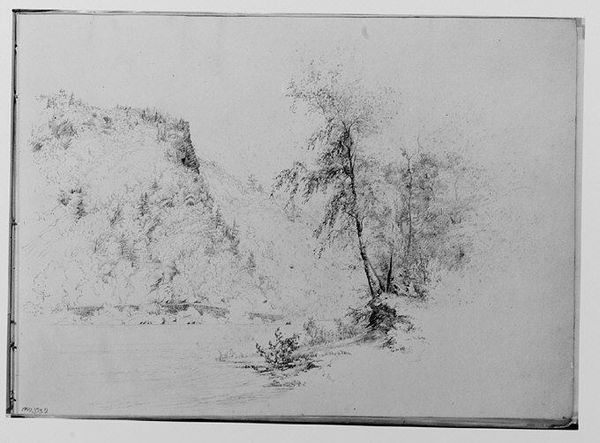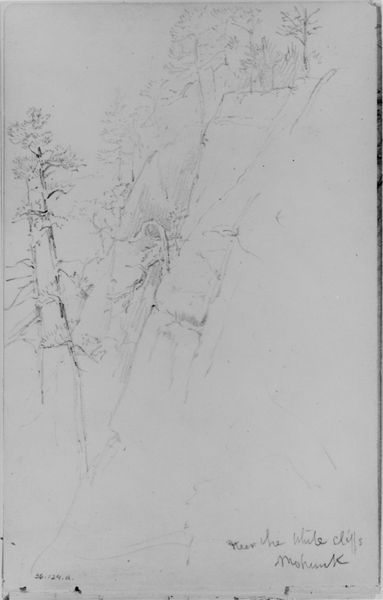
drawing, pencil
#
drawing
#
landscape
#
pencil
#
hudson-river-school
#
line
#
realism
Dimensions: 5 1/2 x 8 1/2 in. (14 x 21.6 cm)
Copyright: Public Domain
Curator: This is Thomas Addison Richards’ pencil drawing, "Wapwallopen Creek, Pennsylvania," created in 1852. It captures a serene landscape now residing here at the Metropolitan Museum of Art. Editor: There’s something immediately captivating about its quietness. The contrast of light and shadow creates a powerful visual rhythm, drawing you into the heart of the waterfall itself. It’s incredibly effective considering it's rendered entirely in pencil. Curator: Richards was a key figure in the Hudson River School movement, which promoted an appreciation of the American landscape at a time of great social and economic change. This piece, I think, exemplifies that embrace of the picturesque, reflecting a burgeoning national identity deeply connected to the land. Editor: Yes, and it's so skillfully composed. The way the lines converge to form the cascading water and rocky terrain displays a clear understanding of form and volume. Did Richards use any particular techniques to achieve such subtle gradations of tone? Curator: It’s quite likely Richards employed a range of techniques like hatching, stippling, and smudging to manipulate the graphite. Also, keep in mind the cultural context: The construction of railroads and expanding industries in the region placed landscapes like Wapwallopen Creek on the cusp of significant alteration. So while formally representational, the artwork documents the country’s rapid development and humans' increasing modification of the environment. Editor: I appreciate how that context informs the tranquility I observed initially. The bridge subtly suggests human intervention without disrupting the organic feel, which speaks volumes about perception during that period. The composition suggests a careful observation. The scene is not merely replicated, but imbued with a sense of temporal stillness. Curator: Indeed. The work allows us to appreciate the tension inherent in that era—the simultaneous valuing of untouched wilderness and relentless pursuit of progress. The drawing therefore stands as a potent symbol of our intertwined relationship with nature. Editor: Richards captured something unique; more than just a rendering, it becomes a subtle and contemplative portrait. The stark tonality serves as a form of semiotic language where gradations tell a nuanced story. Curator: Thinking about it, the drawing offers not just a landscape but an intersection of nature and industry within our evolving cultural landscape. Editor: Absolutely; an almost meditative examination rendered with thoughtful artistic economy.
Comments
No comments
Be the first to comment and join the conversation on the ultimate creative platform.
